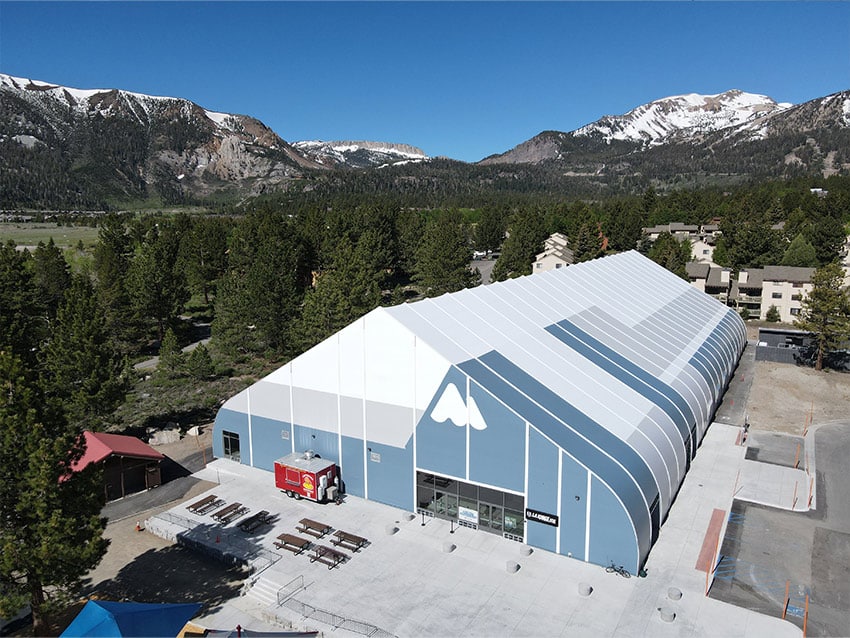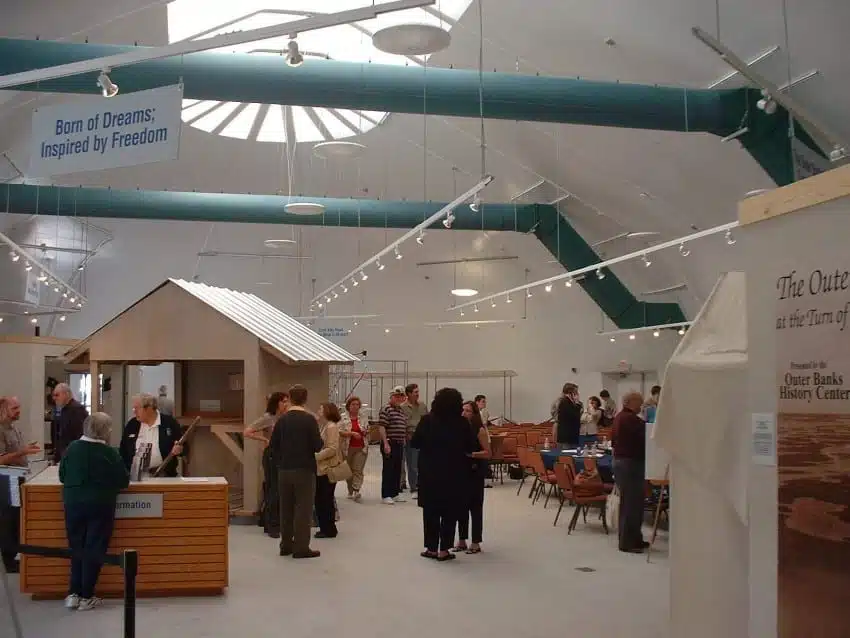
The demand for innovative, adaptable, and cost-effective building solutions has grown as modern architecture evolves. One standout solution that has recently captured attention is fabric membrane technology for commercial buildings. Unlike traditional structures that rely on heavy materials, such as steel or concrete, fabric membrane buildings are constructed using lightweight, high-tensile materials. This approach creates versatile, durable structures ideal for various commercial applications, from sports facilities to warehouses.
In this article, we'll examine the top 10 benefits of using fabric membrane technology for commercial buildings. Whether you're planning a temporary venue or a permanent commercial facility, this solution offers unique advantages that can transform the design and functionality of your space.
1. Cost-Effectiveness
One of the most appealing benefits of fabric membrane technology is its cost-effectiveness. Compared to traditional building materials, fabric membranes are more affordable to produce, transport, and install. These savings can be particularly beneficial for large-scale commercial projects where material and labor costs can quickly add up.
With fewer materials needed for structural support, and shorter construction times, fabric membrane buildings provide a more budget-friendly solution for many businesses. For example, many industries—from logistics to sports and even agriculture—have found that fabric membrane structures meet their needs without breaking the bank.
2. Faster Construction Times
Fabric membrane structures can be built in a fraction of the time it takes to construct traditional buildings. These structures are often pre-engineered, meaning that components can be manufactured off-site and then assembled on location. For businesses looking to reduce downtime or quickly expand operations, this speed of construction can make a massive difference.
In some cases, fabric membrane buildings can be erected in weeks rather than months. This quick setup is ideal for companies that need temporary or semi-permanent structures, allowing them to respond to immediate demands without delays.
3. Flexibility and Adaptability

The flexibility of fabric membrane technology makes it an attractive choice for commercial applications. Since these structures can be customized to meet specific needs, businesses have the freedom to adjust the size, shape, and layout to fit a unique purpose.
Moreover, fabric membrane structures can be relocated or expanded with ease. If your business grows, these buildings can grow with you. Unlike traditional buildings, which often require extensive planning and resources for expansion, fabric membrane technology can adapt to changing needs without major renovations or disruptions.
4. Lightweight Yet Strong
Despite their lightweight nature, fabric membrane structures are incredibly strong and durable. The advanced materials used in fabric membranes, such as coated polyester or PTFE (polytetrafluoroethylene), can withstand harsh weather conditions, including snow, wind, and rain. This strength, combined with their flexibility, ensures that fabric structures are resilient against both daily wear and extreme weather events.
The lightweight nature also reduces the need for extensive foundation work, which can significantly lower construction costs and environmental impact. This strength-to-weight ratio makes fabric membrane technology especially suitable for areas prone to seismic activity, as the flexibility helps structures absorb and dissipate energy.
5. Energy Efficiency
Energy efficiency is increasingly important to businesses, not only for environmental reasons but also due to rising energy costs. Fabric membrane structures are designed to maximize natural light, reducing the need for artificial lighting during daylight hours. The translucent properties of some fabric membranes allow sunlight to penetrate, creating a bright, well-lit interior without overheating the space.
Additionally, certain membrane materials offer excellent insulation properties, helping to maintain consistent indoor temperatures. This natural light diffusion and thermal efficiency reduce reliance on heating, cooling, and lighting, translating to lower energy bills and a smaller carbon footprint.
6. Enhanced Aesthetic Appeal

Fabric membrane technology offers a sleek, modern look that can elevate the aesthetic appeal of any commercial building. The flexibility of fabric materials allows for unique, curved designs and creative shapes, which are challenging to achieve with conventional building materials.
Businesses aiming to create an eye-catching structure can benefit from this design freedom, as fabric membrane buildings are often visually striking and can become a landmark or a memorable feature. From retail centers to sports facilities, fabric membrane structures stand out due to their unique, airy appearance.
7. Low Maintenance Requirements
Another notable advantage of fabric membrane technology is its low maintenance. These buildings are designed with durable materials that resist rust, corrosion, and UV degradation. The membrane’s non-porous surface also makes it resistant to mold and mildew, which is a significant advantage in humid or rainy climates.
For commercial spaces, reduced maintenance means lower long-term costs and fewer disruptions. Unlike traditional buildings that may require frequent repairs, painting, or treatments, fabric membrane structures are relatively hassle-free. This durability and low maintenance make fabric membrane technology ideal for high-use commercial spaces where frequent upkeep would be inconvenient.
8. Environmentally Friendly
Sustainability is a key consideration in modern construction, and fabric membrane buildings excel in this area. Due to their lightweight nature, these structures require fewer resources to produce and transport. They also produce less waste during construction, as fabric membrane components are often recyclable and easy to repurpose.
Moreover, some fabric membrane buildings are designed with eco-friendly materials that reduce the environmental impact even further. When combined with their energy efficiency and low maintenance needs, fabric membrane technology provides an eco-conscious solution that aligns with green building practices.
9. Weather Resilience
Fabric membrane buildings are engineered to handle a range of extreme weather conditions, from heavy snow to high winds. With the right tensioning and anchoring systems, these structures can withstand intense forces without compromising structural integrity. The materials used in fabric membrane technology are highly resistant to UV damage, rot, and corrosion, ensuring that the structure remains durable over time, even in challenging environments.
In regions where severe weather is a concern, fabric membrane structures offer peace of mind. These structures are used globally, from arctic climates to tropical zones, proving their versatility and resilience in varied conditions.
10. Customizable for Multiple Uses
Fabric membrane technology is suitable for a vast range of commercial applications, thanks to its customizability. Whether it’s a warehouse, sports arena, retail space, or temporary event venue, fabric membranes can be tailored to meet the unique demands of each setting.
The modularity and adaptability of these buildings allow them to be repurposed as needs change. For instance, a structure initially used for warehousing can be quickly transformed into a distribution center or an exhibition hall. This adaptability gives businesses the flexibility to modify their spaces without having to invest in new construction.
Final Thoughts
In today’s commercial construction landscape, fabric membrane technology offers an impressive combination of benefits that traditional building materials struggle to match. With advantages ranging from cost savings to energy efficiency, and from aesthetics to sustainability, these structures are a smart choice for businesses looking to create versatile, durable, and attractive buildings.
One leading provider of these innovative structures, Sprung Structures, has pioneered high-performance fabric buildings that serve diverse industries around the world. Their expertise in fabric membrane technology ensures that businesses get a solution tailored to their unique requirements.
Whether you’re expanding a current facility, launching a new business, or in need of a temporary structure, fabric membrane technology has the flexibility, durability, and efficiency to support your goals. As commercial needs evolve, this technology offers a practical, sustainable, and aesthetically pleasing alternative to traditional buildings—one that’s likely to play a significant role in the future of construction.

